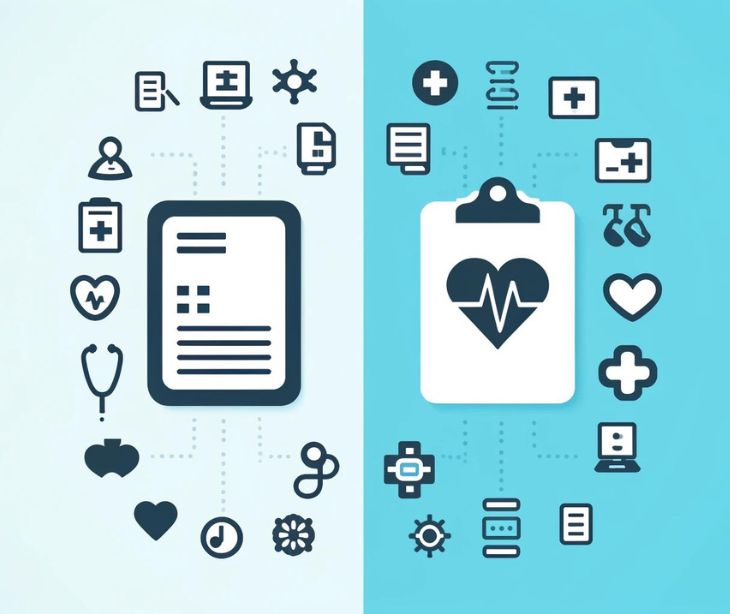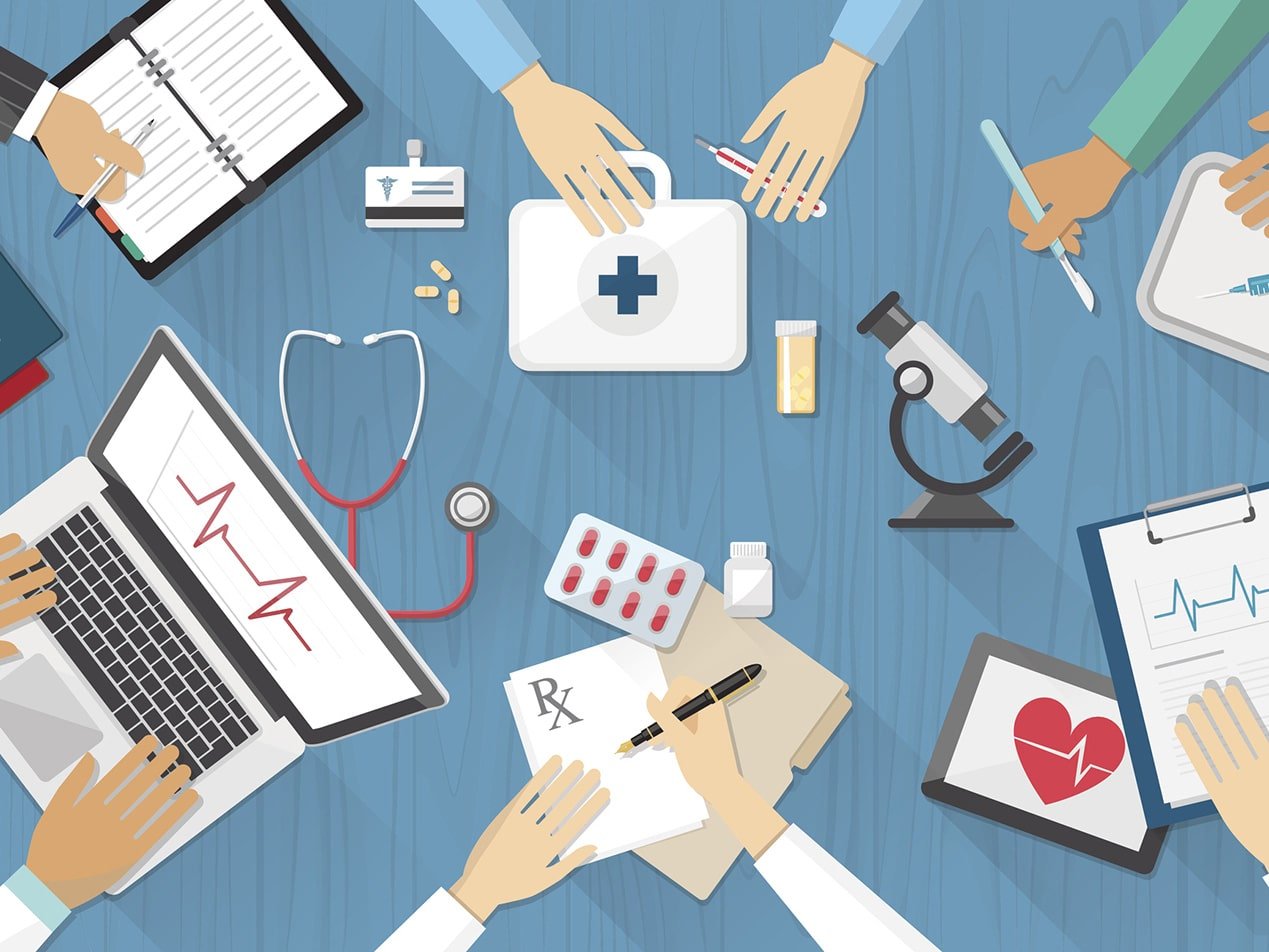
Electronic medical records (EMRs) contain patient health information within one healthcare organization, while electronic health records (EHRs) include a broader view of a patient's health history across different healthcare settings.
Electronic medical record (EMR)
An EMR is the digital equivalent of a traditional paper chart maintained by a specific healthcare provider's office. It primarily focuses on data generated within that practice:
- Encounter notes: Detailed records of your visits, including physician notes, diagnoses, and medications prescribed during those consultations.
- Internal lab results: Test results obtained through the practice's own lab facilities.
While EMRs improve searchability and efficiency compared to paper charts, the information typically remains within the practice. This can lead to fragmented care, especially if patients consult multiple specialists or physicians. Patients would have to explain their medical history repeatedly or request that their previous records be physically transferred to a new provider, possibly causing treatment delays.
Electronic health record (EHR)
An EHR is a secure, centralized repository of a patient's health journey. It encompasses a wider range of data points than an EMR, including:
- Medical history: Past diagnoses, medications, allergies, immunizations, surgeries, and procedures.
- Clinical data: Lab results, imaging reports, and other diagnostic test findings from various facilities.
- Preventive care: Documentation of screenings, vaccinations, and wellness visits.
- Social determinants of health: Information regarding patient lifestyle habits, socioeconomic factors, and environmental influences that impact their well-being.
The HHS explains, "An EMR allows the electronic entry, storage, and maintenance of digital medical data. EHR contains the patient's records from doctors and includes demographics, test results, medical history, history of present illness, and medications."
The interoperability of EHRs
EHRs promote a collaborative approach to healthcare, while EMRs offer a more limited view specific to the managing practice. Interoperability allows for seamless sharing of patient information across different healthcare settings, which could lead to better coordination of care and improved patient outcomes.
For example, an allergist can use EHRs to review a patient's medication history recorded by their primary care physician to avoid prescribing anything that might trigger an adverse reaction.
Protecting patient privacy
HHS also explains that EMRs and EHRs are a "top target in healthcare breaches" and are particularly "vulnerable to hacking due to security or privacy issues… because of the Protected Health Information (PHI) it contains and the profit they can make on the dark web or black market."
HIPAA sets standards for the privacy and security of protected health information (PHI), including electronic PHI (ePHI). So, providers must integrate HIPAA compliant communication into EMRs and EHRs to securely exchange patient information.
HIPAA compliant emails are encrypted to protect sensitive patient data. These systems ensure that emails containing PHI are transmitted securely and accessed only by authorized recipients.
Additionally, they provide audit trails and access controls to monitor and track the flow of PHI, helping healthcare organizations stay HIPAA compliant. By using HIPAA compliant email, healthcare providers can collaborate more effectively, which could lead to improved patient outcomes and satisfaction.
FAQs
What type of information do EMRs contain?
EMRs contain medical and treatment histories of patients within one healthcare practice, including diagnoses, medications, lab results, and treatment notes.
What type of information do EHRs contain?
EHRs contain the same information as EMRs and also include data from multiple healthcare settings, providing a more holistic view of a patient's health history.
How do EMRs and EHRs streamline healthcare workflows?
EMRs and EHRs streamline healthcare workflows by digitizing patient records, allowing quick access to information, reducing paperwork, and facilitating communication among healthcare providers.
Subscribe to Paubox Weekly
Every Friday we'll bring you the most important news from Paubox. Our aim is to make you smarter, faster.



